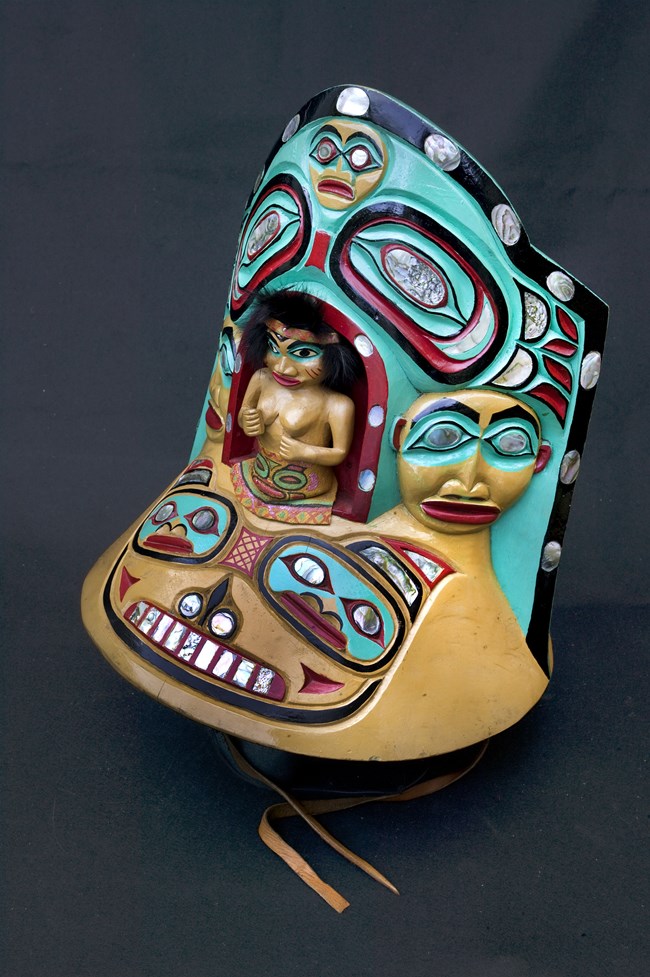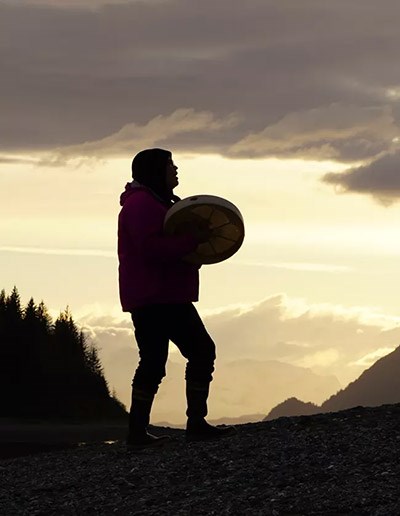Last updated: March 2, 2023
Article
Glacier Bay Wilderness as Homeland



The concept of wilderness as defined in the Wilderness Act is a modern construct that emphasizes the value of places with little evidence of human change. But the continued relationship of the Huna Tlingit with their Homeland is as much a part of the wilderness character of Glacier Bay as the glaciers, the bears, and the opportunity for an unconstrained experience. Perpetuating physical and spiritual connections between traditional people and their Homeland ensures that the Glacier Bay wilderness remains a living community.
Since time immemorial – time before memory - the Huna Tlingit clans have embraced and been embraced by Glacier Bay Homeland. They did not simply occupy or settle or inhabit the land, they shaped, and in turn were shaped by the dynamic forces of an environment that surged and retreated, evolved and adapted, grew and senesced. Their ancestors affected ecological change in myriad ways – through the simple acts of harvesting berries and harbor seals, crafting clan houses from nearby trees, and excavating rocky shorelines to facilitate canoe landings. But even the very substance of Glacier Bay Homeland - its shape and depth - was sculpted by acts of human courage – and human frailty. In the ancestral past, a young Tlingit girl called down a far distant glacier, forever erasing the braided river channels of L'éiwshaa Shakee Aan (Sand Hill Mountain Land, near Bartlett Cove). A clans’ human sacrifice halted the glacier’s advance at Sdakweix Lutú (Point Adolphus) just before the advancing ice choked off the clans’ sole connection to the productive waters of the Outer Coast. In a far distant village, young men’s disrespect manifested an avalanche and a subsequent tsunami in Ltu.áa (Lituya Bay) and shamanic powers caused the greatest of mountains, Tsalxaan (Mount Fairweather), to tremble and split. Even today, glaciers calve, icebergs slide gently away, and turbulent waters settle when the Huna Tlingit proffer food and tobacco to the spirits of living and non-living beings. The Tlingit relationship to land and sea is such that a single intentional act - or a moment of disrespect – can direct geological events and the resulting cascade of forever-altered ecological processes. Tlingit Aaní, Homeland, is not free from human control, but rather in an intimate and balanced relationship with it. It reflects wholly and utterly “the imprint of man's work.” For the Tingit, the land has meaning only as a place of intricate, balanced, and ongoing connection between those long past, those alive today, and those yet to come. The Glacier Bay wilderness – the land, and air and sea – is ordered and sustained by those who co-created it.

- Duration:
- 1 minute, 54 seconds
The Huna Tlingit travel to the face of Margerie Glacier on Journey to Homeland trips to sing to, and ritually feed, the spirits of their departed ancestors.

-
Glacier Bay Song, 2016
Composed in Glacier Bay Homeland by Hoonah high school students and culture bearers. Performed by Hoonah City School’s elementary Tlingit language class.

Photo by Ben McLuckie
Toowú sigóo áyá
(We are happy)
Has du een yéi haa teeyí
(When we are with our ancestors)
T’akdeintaani yátx’i
(Children of the T’akdeintaan)
A kaanáx wutu.aadí
(As we walk through the land)
Yeisú a xoox’ áyá
(They are still there)
Haa shagóon aaní
(On our ancestors’ land)
Aadéi satoo áx ji
(We can hear)
Haa dachxáni yání
(Our grandchildren’s voices there)

